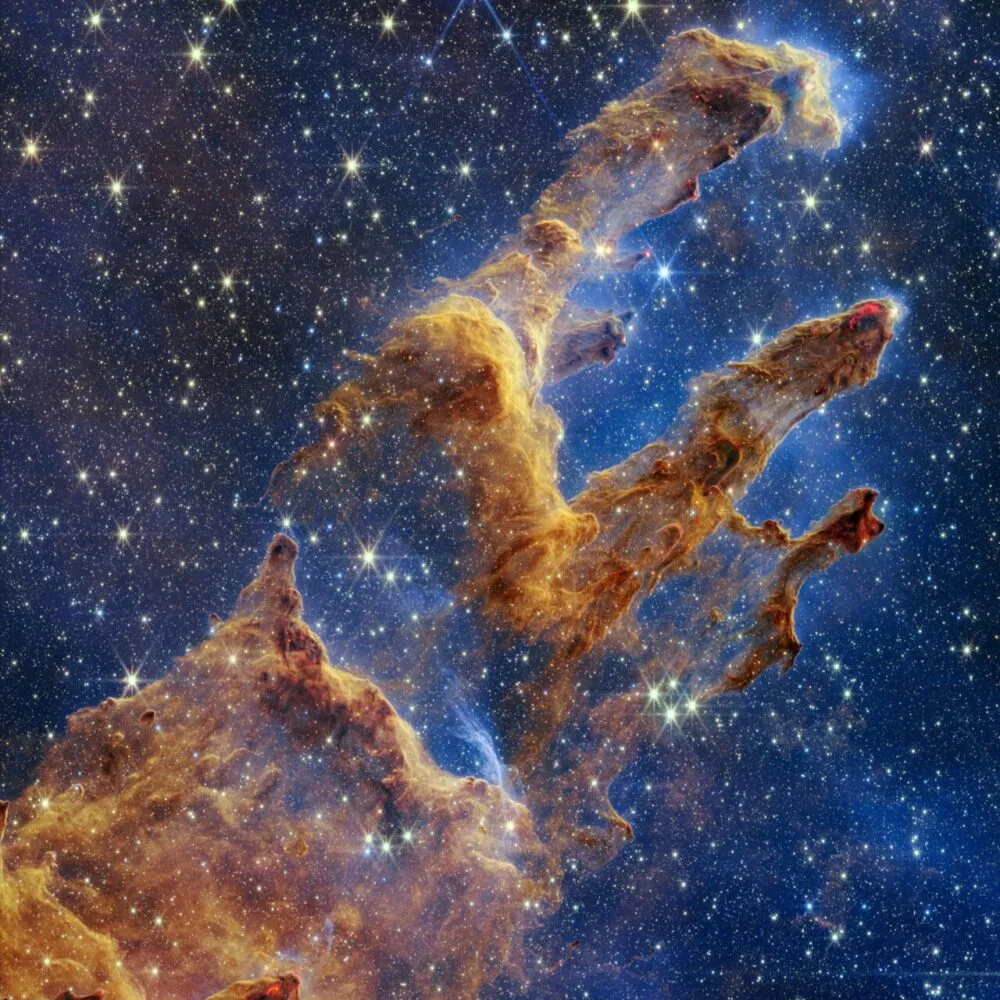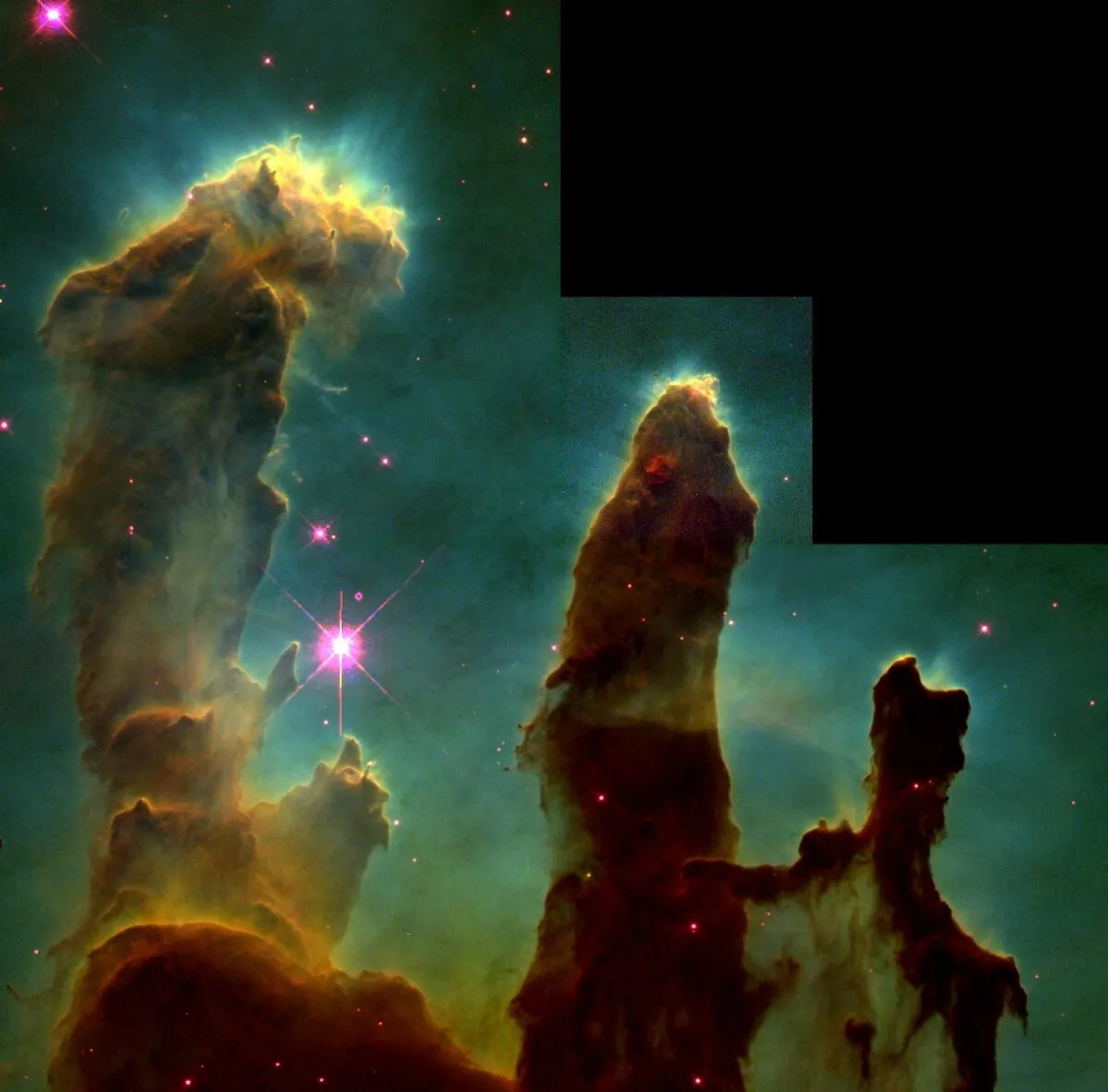The James Webb Space Telescope has captured a brand new image of the Pillars of Creation, a star-forming region within the Eagle Nebula that contains dense pillars of cosmic dust and gas.
The image calls to mind the Hubble Space Telescope image of the Pillars of Creation - perhaps Hubble's most famous image - and is further evidence of just what the Webb Telescope can achieve.
See the latest James Webb Space Telescope images
Want to see it for yourself? Read our guide on how to observe the Pillars of Creation

This new Pillars of Creation pic was captured using Webb's Near-Infrared Camera (NIRCam), and reveals evidence of newly-formed protostars embedded within the cosmic dust.
These are seen as red blobs scattered throughout the image.
These protostars are the early seeds that will eventually form brand new stars, as cosmic material begins to coalesce, collapse under its own gravity and heat up.

The wavy lines seen along the edges of the pillars are jets shooting out from newborn stars, smashing into the clouds of gas and dust and forming 'bow shocks' as they do so, much like a vessel moving through water.
These young stars could be as young as just a few 100,000 years old: veritable infants in cosmic terms!
Also visible are the 6-pronged diffraction spikes - caused by Webb's mirror - that are fast becoming an iconic feature in JWST images.
This brand new image is giving astronomers and cosmologists a new view of a key star-forming region, enabling further study of the mysterious process of star formation.
Already, the James Webb Space Telescope is transforming our view of the Universe, revealing old familiar targets in a brand new light.
